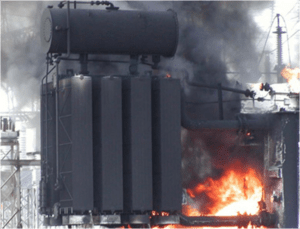Electrical Injuries: Effects and Causes
In this article, we will know about what is an electrical injury, what are the causes of electrical accidents, and how we can go for first aid after an electrical accident.
Direct Injury
Electrical Shock
-We get an electrical shock when an electrical current passes through our body.
This condition arises when a part of our body completes an electrical circuit by coming in contact with a live wire and an electrical ground, or Touching a live wire and another wire at a different voltage
Burns
Slight shock felt is felt when the current amplitude is more than 5mA; not painful but disturbing. The average individual can let it go. However, strong involuntary reactions to shocks in this range may lead to injuries.
ØInternal Damages-Painful shock when the current amplitude range is between 5-30mA. muscular control is lost and this is called the freezing current or “let-go” range.
Ø Extreme pain, respiratory arrest, severe muscular contractions when the current passing through our body exceeds 50mA. Individuals cannot let go even if death is possible.
•Indirect – Falls
(30 % of Electrocutions are accompanied by falls)
Most common Causes of Electrical Injuries
- Contact with live electrical parts: Coming into direct contact with live electrical parts, such as touching exposed wires or terminals without proper protection or equipment, can result in electrical shock or electrocution.
- Inadequate training and knowledge: Lack of proper training and knowledge about electrical systems, equipment, and safety procedures can lead to mistakes, misjudgments, and improper handling of electrical components, resulting in accidents.
- Unsafe work practices: Not following safe work practices, such as not using appropriate personal protective equipment (PPE), working on energized equipment without proper precautions, or bypassing safety devices, can increase the risk of electrical accidents.
- Overloading electrical circuits or equipment: Overloading electrical circuits or equipment by connecting too many devices or appliances to a single circuit or outlet can cause overheating, short circuits, and electrical fires.
- Poor maintenance and inspection: Neglecting proper maintenance and inspection of electrical systems and equipment, such as failing to identify and address worn-out wires, loose connections, or faulty components, can lead to electrical accidents.
- Damaged or faulty electrical equipment: Using damaged or faulty electrical equipment, tools, or appliances can increase the risk of electrical accidents, including electrical shocks, fires, and explosions.
- Inadequate grounding or bonding: Inadequate grounding or bonding of electrical systems and equipment can result in the accumulation of electrical charges, which can cause electrostatic discharges, sparks, and fires.
- Working in hazardous environments: Working in hazardous environments with increased risk of electrical accidents, such as wet or damp conditions, confined spaces, or areas with flammable or explosive gases, can pose significant risks if proper safety measures are not followed.
- Improper use of extension cords or electrical cords: Improper use of extension cords or electrical cords, such as using damaged cords, overloading cords with excessive loads, or running cords through unsafe locations, can result in electrical accidents.
- Human error: Human error, such as mistakes in the design, installation, maintenance, or operation of electrical systems and equipment, can lead to electrical accidents.
It’s important to always prioritize safety when working with electricity, follow proper procedures, use appropriate protective equipment, and seek professional help when needed. Regular training, maintenance, and inspection of electrical systems and equipment can help prevent electrical accidents and ensure safe operations.
First Aid after an Injury
•Don’t become the next victim
•Isolate the victim from the Circuit
–Disconnect the power supply
–Use Insulators
•High Voltage line contacts are usually fatal, better seek help from experts
•Check for breathing
–Artificial Respirations
•Check for a pulse;
–Cardiac resuscitation
Need of PPE
Personal Protective Equipment (PPE) is essential when working in electrical substations to protect workers from potential hazards. Some common types of PPE used in electrical substations include:
- Insulated Gloves: Insulated gloves made of rubber or other insulating materials are used to protect workers from electrical shock when working on live electrical equipment.
- Safety Glasses or Goggles: Safety glasses or goggles with impact-resistant lenses are used to protect the eyes from debris, dust, and other particles that may be generated during work in electrical substations.
- Flame-resistant Clothing: Flame-resistant clothing made of materials such as Nomex or other fire-resistant materials is used to protect workers from potential fire hazards in case of arc flashes or other incidents.
- Hard Hat: A hard hat with electrical insulation properties is used to protect the head from falling objects or impact hazards.
- Safety Shoes or Boots: Safety shoes or boots with electrical insulation properties and slip-resistant soles are used to protect the feet from potential electrical hazards and other workplace hazards.
- Arc Flash Clothing: Arc flash clothing, including arc-rated shirts, pants, and coveralls, along with arc-rated face shields or hoods, are used to protect workers from arc flash incidents, which can release significant amounts of energy and cause severe burns.
- Hearing Protection: Hearing protection, such as earplugs or earmuffs, is used to protect workers from excessive noise levels that may be present in electrical substations.
- Face Shield: A face shield with arc-rated properties is used to protect the face and neck from potential arc flashes, sparks, or other flying debris.
- Voltage-rated Tools and Equipment: Voltage-rated tools and equipment specifically designed for working on live electrical systems are used to minimize the risk of electrical shock or electrocution.
- Fall Protection Equipment: Fall protection equipment, such as harnesses, lanyards, and anchors, may be required when working at heights or in elevated areas within the substation to prevent falls.
It’s important to select PPE that is appropriate for the specific tasks and hazards present in the electrical substation, and to ensure that it is properly used and maintained. Regular training on the proper use of PPE and adherence to safety procedures is crucial for the protection of workers in electrical substations.


